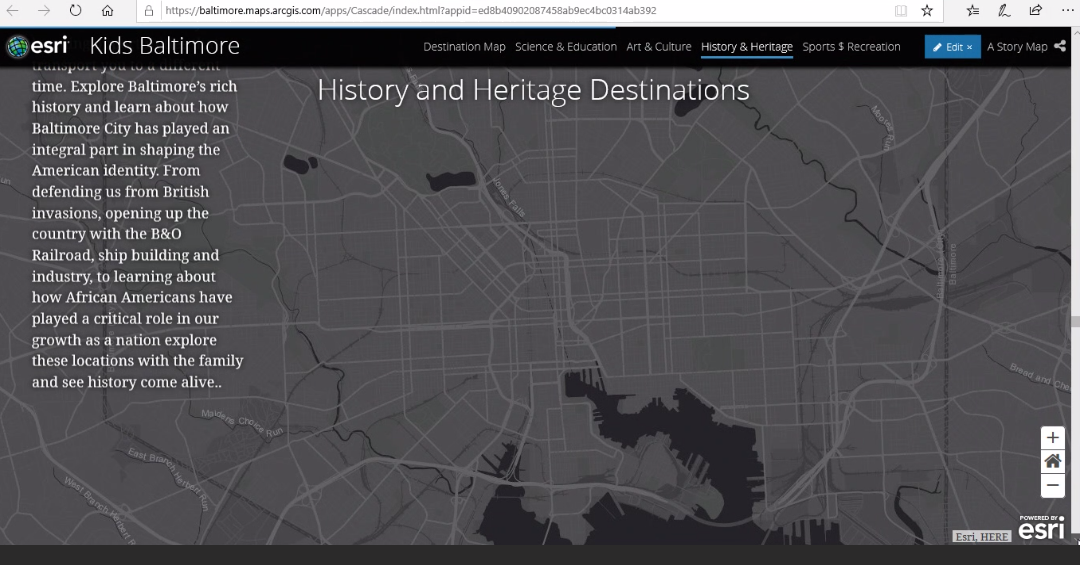On December 31, 2020, the City of Baltimore is launching an updated open data portal. With the new version, the central point to access city government datasets will have an emphasis on story maps and dashboards that contextualize data for citizens, city officials said.
When the update launches, the data.baltimorecity.gov URL will remain the same, but the backend and APIs will be different. That means sites and organizations that pull data from the city’s open data site will need to reestablish those links come the end of 2020.
It’s the result of work this year on the portal and datasets within the Baltimore City Office of Information and Technology (BCIT), which started with the 2011 launch of the initiative to make more data from city government agencies publicly available, called Open Baltimore.
“In a nutshell, what we’ve been doing in the last year is streamlining problems. We had a lot of data. We had like let’s say [about] one hundred fifty or sixty data sets,” said Baltimore City Chief Data Officer Michael Wisniewski. “But there were things out there that were old, like one-time datasets put out there. And what we’ve done is either automate the feeds or we’ve gotten rid of or mothballed some stuff.”
BCIT said it transformed many of the older datasets, while its GIS team discontinued legacy datasets in order to provide accurate information.
In practice, take the example of the city employee salary datasets that are released every year. Normally, these arrive to Wisniewski’s team as individual datasets for each department. The update means they’ll be turning 10 datasets into one. So if someone wants to compare the salaries of a police officer and sanitation worker, they now won’t have to go through the trouble of having to find and download two individual datasets and merge the two.
The salaries are one example, but there are many datasets that had the same problem, and were fixed ahead of the update.
Another focus will be a push to highlight more authoritative datasets, so it’s clear what data is coming from the city and what data is coming from community organizations.
“We trust that this update will assist other organizations and communities that also use the data sets,” said Todd Carter, the City’s chief information officer. “We trust that this update will assist other organizations and communities that also use the datasets. Open Baltimore is shaped for the government and the community to use the technology to promote transparency, improve performance and enhance citizen engagement.”
For the next six months, Wisniewski said, the team will be “tuning existing dashboards and data with this new platform.”

A landing page for Open Baltimore. (Courtesy photo)
All of this is an effort to use data to increase transparency in government.
“The Open Data Baltimore Hub is a powerful tool for transparency and accountability within our city government,” said Mayor Brandon M. Scott, who as a city councilmember led passage in 2016 of an open data policy permanently requiring release of the city data that appears in the portal. “It is our duty to ensure that city government works for our residents.”
As the city continues to modernize, BCIT is looking at new features to increase transparency in government.
“We are working on our internal ERP [enterprise resource planning] project, and I’m going to try to see where we’re going to try to expose out some spending data, which is called open checkbook,” Wisniewski said. “This is just basically giving people the ability to see when and where the city spends its money.”
Recently-inaugurated City Comptroller Bill Henry has talked about a similar project.
[Editor’s note: BCIT provided additional context to clarify that the open checkbook project remains in a developmental phase].
It reflects a move to not just release data for the public to use, but present it in a way that many can understand, as well.
“For most U.S. citizens of Baltimore, raw data doesn’t tell them anything,” said Samantha Luckhardt, GIS supervisor at BCIT and a team lead on the update to the open data site. “They don’t know data analytics, they don’t know how to do the mapping. They don’t really know how to really garner information from the datasets. So we’re going to be reorganizing it to kind of highlight the stories, the initiatives and the dashboards that provide insight into the actual data.”
Over the last year, we’ve seen the State of Maryland and Baltimore County government release open data platforms with tools like dashboards, as well.
Donte Kirby is a 2020-2022 corps member for Report for America, an initiative of The Groundtruth Project that pairs young journalists with local newsrooms. This position is supported by the Robert W. Deutsch Foundation.Before you go...
Please consider supporting Technical.ly to keep our independent journalism strong. Unlike most business-focused media outlets, we don’t have a paywall. Instead, we count on your personal and organizational support.
Join our growing Slack community
Join 5,000 tech professionals and entrepreneurs in our community Slack today!

The person charged in the UnitedHealthcare CEO shooting had a ton of tech connections

The looming TikTok ban doesn’t strike financial fear into the hearts of creators — it’s community they’re worried about

Where are the country’s most vibrant tech and startup communities?


